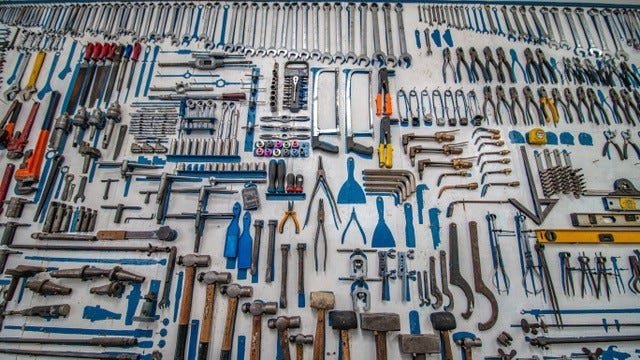The Mise en Place of Writing
So, you want to finish a piece of writing you have been working on. Or you are attending a writing bootcamp. Will you waste precious hours writing, deleting, writing and then eventually surfing the internet? Or will you create something of good and promising value?
The Fear of Writing
Writing often strikes great fear in people. A fear that people refuse to acknowledge. And the way we deal with unacknowledged fear is to avoid, postpone and deny. If you are avoiding or postponing your Writing, consider this: First, you’re not alone. Second, although you think you’re postponing your Writing, you’re not. What you are actually postponing is Thinking and Planning, which is the first and most crucial step in Writing.
We often use the keyboard to transfer ideas in our head to a computer. That does not mean we are Writing, in the same way that writing a list does not mean we are Writing. What we’re actually doing is we are typing out our ideas.
The difference between typing and Writing is this: when we Write, we have a clear idea of what we want to communicate, and we have a clear sense of what our paragraph needs to say — we are merely shaping our ideas through words and sentences. When we type, we are still sorting through our ideas and placing and replacing them. We’re mapping our minds, brainstorming, drafting, doodling, sketching. In short, we are searching for the very ideas that we want to convey. Typing allows us to dig deep into our minds and create connections that didn’t exist before.
Typing is thinking. Writing is shaping the thinking through words.
Once we understand and apply this distinction, we can break Writing down into two processes — thinking and planning on the one hand (which we conflate with Writing) and Writing itself on the other. In short, to be able to Write, we need to think and plan first, and although doing so may resemble Writing, it is not. What we’re actually doing is some mise en place.
What’s mise en place, you ask?
Mise en place is a French culinary term. It is the advance preparation and assembly of ingredients to make cooking more efficient. It helps chefs prepare hundreds of dishes within a very limited amount of time.
The man who did the most to popularize mise en place was Auguste Escoffier. Referred to as the “king of chefs”, Escoffier modernized the world of restaurants. He drew on his experience of running army kitchens to train his staff to organize their ingredients and tools, long before guests would arrive. Escoffier’s approach was originally perceived as being too fussy, but chefs eventually realized the benefits of mise en place, and it has now become a cornerstone of the modern kitchen.
What use is it to me, an academic?
Maximizing efficiency by organizing one’s tools and ingredients can be helpful for academic writers as well. While novelists can rely on their imagination to write, academics rely on several ingredients, including vast amounts of published scholarship, to position and develop their contribution.
This is where the principles of the mise en place can be most helpful. The more you prepare ahead of time, the more progress you are likely to make with your writing project. Below are three key principles to get you started. In the next blog post, we will give more precise tips and tools on how to start a writing mise en place.
Plan backwards
A chef starts planning with an image of the finished dishes she will serve to her guests. Then she starts planning backwards, counting the amount of time it will take to cook, plate and transport that dish to the table.
To plan your Writing backwards, count the number of paragraphs you will need to write. To do so, take a few articles from the journal you are targeting with your text. Then, create a table charting the number of paragraphs in each section of each of the articles. The average number of paragraphs across the articles will be the number of paragraphs you need to produce for your text.
Breaking down an article into paragraphs and planning backwards can be a useful way to plan your Writing. Once you think about an article as writing 50 well-crafted paragraphs, it may seem less daunting.
Organize your ingredients and tools
The mise en place entails having all your ingredients and tools within reach, so that the cook loses the least amount of time when cooking. Not only do cooks prepare key ingredients ahead of time but they also design and arrange their kitchens to maximize efficiency.
The same principle should apply to academic Writing. To write efficiently, organize all relevant sources ahead of time. You should have notes about what you have read, and these notes should help you compare and contrast different perspectives on your topic.
As academic writers, we also have tools and a workstation. The best chefs would never cook at a dirty workstation. So you may want to declutter your computer and set up your digital tools to help you focus on your Writing.
Be present
Once you gather all your tools and ingredients, it becomes easier to focus on your writing and to cultivate a focused presence.
Presence is essential to many crafts. In Japanese Zen Buddhism, the head of the kitchen, or Tenzo, emphasizes the necessity of focus and commitment: “When sitting, just sit. When cooking, just cook.” It is a quality of being in the moment that is both mental and physical.
The mise en place of our academic writing tools — knowing how much we need to write and what commentary we want to make on past work and how to position ourselves within it — means that our mind is rested and ready to Write rather than in a state of frenzy, gasping for coherence.
To be more present, to be less anxious, to be a more positive writer, the mise en place offers a promising approach. Tomorrow begins today and your Writing mise en place has just started.
Written in collaboration with Tanvi Mehta, academic coach and editor: https://www.mehtatext.com/about
References
Charnas, D. (2016). Work Clean: The life-changing power of mise-en-place to organize your life, work, and mind. Rodale.
Trubek, A. B. (2000). Haute cuisine: How the French invented the culinary profession. University of Pennsylvania Press.



